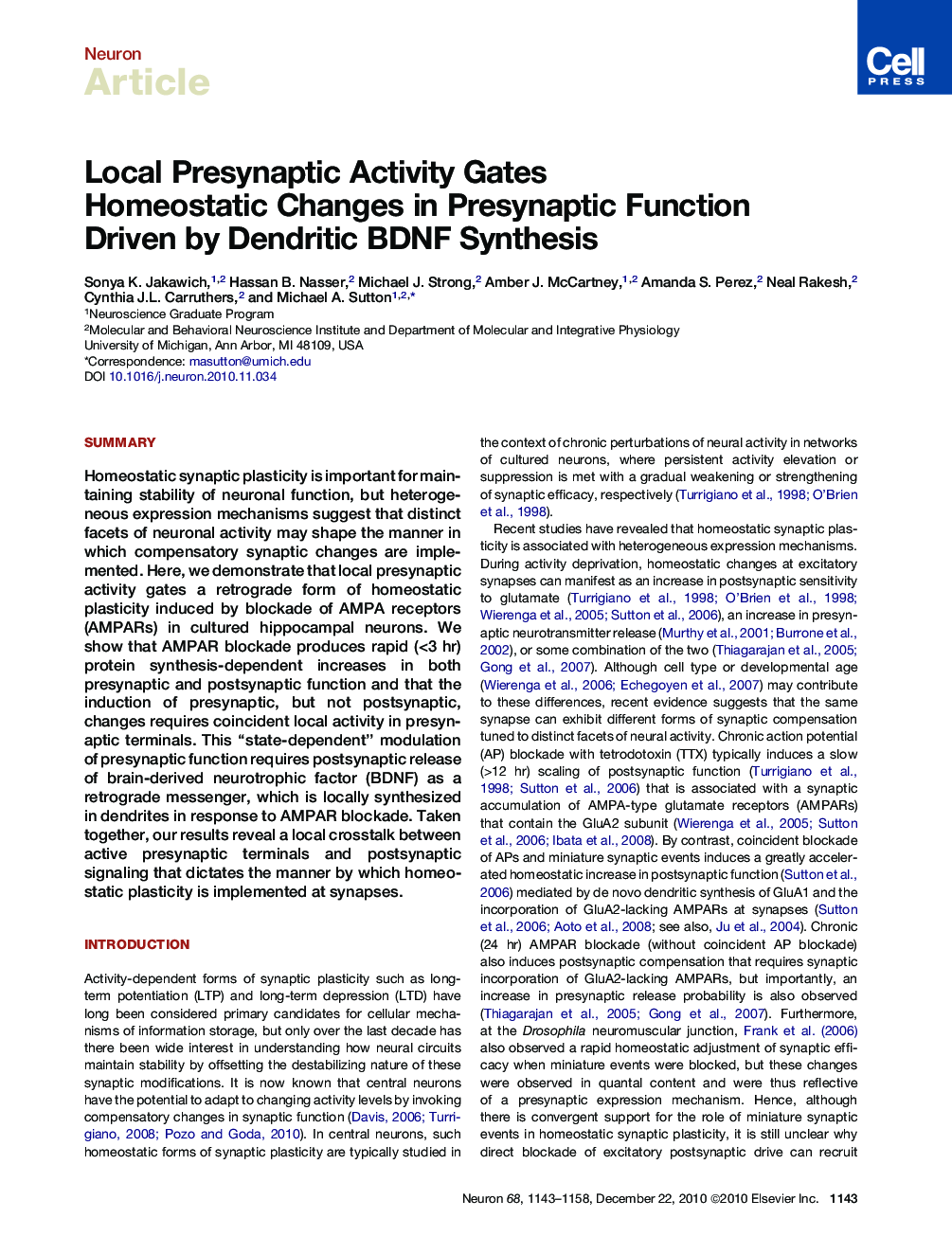| Article ID | Journal | Published Year | Pages | File Type |
|---|---|---|---|---|
| 4321862 | Neuron | 2010 | 16 Pages |
SummaryHomeostatic synaptic plasticity is important for maintaining stability of neuronal function, but heterogeneous expression mechanisms suggest that distinct facets of neuronal activity may shape the manner in which compensatory synaptic changes are implemented. Here, we demonstrate that local presynaptic activity gates a retrograde form of homeostatic plasticity induced by blockade of AMPA receptors (AMPARs) in cultured hippocampal neurons. We show that AMPAR blockade produces rapid (<3 hr) protein synthesis-dependent increases in both presynaptic and postsynaptic function and that the induction of presynaptic, but not postsynaptic, changes requires coincident local activity in presynaptic terminals. This “state-dependent” modulation of presynaptic function requires postsynaptic release of brain-derived neurotrophic factor (BDNF) as a retrograde messenger, which is locally synthesized in dendrites in response to AMPAR blockade. Taken together, our results reveal a local crosstalk between active presynaptic terminals and postsynaptic signaling that dictates the manner by which homeostatic plasticity is implemented at synapses.
► AMPAR blockade drives homeostatic retrograde enhancement of presynaptic function ► Local presynaptic activity gates compensatory increase in release probability ► Postsynaptic BDNF synthesis and release mediates retrograde signaling ► BDNF is locally synthesized in dendrites in response to AMPAR blockade
